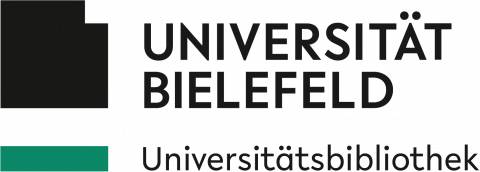Frequently Asked Questions (FAQ)
Detailed information on PIDs in general can be found on the page of the PID Competence Center of our project partner TIB.
There is a video playlist on different aspects of PIDs on the TIB AV portal.
PID4NFDI provides extensive FAQ on all things related to PIDs.
PID is the abbreviation for Persistent Identifier. They are "unique, universal, and persistent identifiers" (Koster, 2020):
- "identifier"= a string of characters that refers to an object
- "unique"= refers to only one object (within the known universe)
- "universal"= applies to the whole world (or the World Wide Web)
- "persistent"= remains available regardless of individual institutions, systems, or system implementations
They refer to digital or physical objects or abstract concepts. They are usually "actionable," meaning they can be represented as a URL that leads to the identified source or to a landing page with metadata information.
PIDs are usually organized in institutionally managed systems. Persistence is primarily a question of service! Agents are always needed who operate the PID service in a technically and organizationally reliable manner. Open infrastructures, associated metadata and services, such as APIs, enable the resolution of PIDs.
A PID string is structured according to a uniform scheme.
Example: DOI have the format prefix/suffix.
A DOI formatted as a URL: https://doi.org/10.2312/40943a34kjnho3
- PIDs prevent broken links (i.e. a URL is no longer resolved because the resource has been relocated or is permanently unavailable).
- They enable unique identification of publications, records, individuals, organizations, research materials, and much more....
- Especially in academia, they provide useful standards for unique citations.
- PIDs can be used to provide unique links to other PIDs, such as linking professional articles or researchers and their datasets.
- PIDs facilitate the comprehensive and accurate attribution of research articles (publications, datasets, conference papers, etc.) to scientific records.
- The use of PIDs is recommended by important research funding bodies and organizations, e.g. in the code "Guidelines for Ensuring Good Scientific Practice" of the German Research Foundation or in Plan S of the "Coalition S".
The “right” persistent identifier (PID) depends largely on what you want to identify (publication, software, person, organization, physical object, etc.), the extent to which metadata is required, and the requirements for sustainability, findability, and interoperability. Here are 10 use cases that explain which PIDs are suitable in each case.
What should you look for when making your selection?
Object type
Depending on whether you want to identify a research data set, software, organization, publication, or physical object, different PIDs have been established for different purposes.
Persistence & infrastructure
A PID only works persistently if the service that assigns it is also operated on a long-term basis and there are clearly defined policies for resolution, metadata maintenance, and referral.
Metadata & resolution
Some PID systems "only" provide a unique identifier, while others offer comprehensive metadata, landing pages, and standardized interfaces (APIs). If you need both discoverability and traceability (provenance), a system with good metadata support is advisable.
Interoperability & Standards
To ensure that your PID can be used in international contexts, you should choose common standard PIDs (e.g., DOI, ORCID, ROR). This facilitates citability, reuse, and linking to other systems.
Costs & Effort
Some PID systems incur ongoing costs or license fees; others can be implemented with open source solutions or institutional services. Check what is technically and financially feasible for your project.
When a publication is deposited in a repository, it is usually given a DOI and can therefore be cited permanently. Researchers can also create an ORCID iD. Publication lists can be created in the ORCID profile by automatically importing your own work from external sources using DOIs or other PIDs or adding it manually.
The metadata of a DOI can include the authors’ ORCID iDs. Conversely, in an ORCID profile, publications can be linked using their PIDs. This creates a bidirectional connection between researchers and their work. Using an ORCID iD improves scholarly visibility and ensures accurate attribution. Publications can be added to the ORCID profile either manually or via automated services.
Yes, this is possible. If no institutional service is available, the free Rogue Scholar service can be used to assign DOIs to blog posts. This service is used, for example, by platforms such as iRights.info, the Open Access Blog Berlin, and the Joint Blog of the DINI Working Groups.
No, duplicate assignment of DOIs is prevented by the central registration authority, the DOI Foundation. Each DOI provider—such as a publisher or repository—is assigned a unique prefix and is responsible for generating individual suffixes.
If a DOI were to be assigned to a second object, the existing entry would be overwritten, and the original object would no longer be referenced. To prevent this, DOI providers must ensure their systems are configured to avoid duplicate assignment.
Yes, PIDs can also be assigned to software, much like for publications or research data—for example, when software is deposited in a repository and assigned a PID. A unique challenge with software is versioning, where different versions may require distinct PIDs and must be linked accordingly.
Here, the granularity of releases is important—e.g., how frequently versions are created—as well as the level of automation for PID assignment to reduce manual workload.
A 2024 workshop addressed these issues. A workshop report and the recommendation paper “Recommendations on Data Versioning” are available.
GitHub, in collaboration with Zenodo, also supports DOI assignment for repositories: GitHub-Zenodo documentation.
An additional workshop on PIDs for software will take place in 2025, organized by PID Network Germany. Announcements will be made on our website.
Yes, the major PID systems are openly documented, and their metadata is publicly accessible:
ORCID iDs and their associated metadata are freely available. ORCID is a non-profit organization funded by a global consortium of universities and research institutions.
DOIs registered via the leading agencies Crossref and DataCite are openly accessible, along with their metadata. The DOI system and its metadata model are also publicly documented. While registration typically involves fees for providers, it is usually free for end users.
ROR (Research Organization Registry) also offers its identifiers and metadata under an open license. ROR is funded by three umbrella organizations, donations, and public grants.
The PID Network Germany project, funded by the German Research Foundation (DFG), aims to build a network of established and emerging stakeholders in science and culture. This network promotes the use, implementation, standardization, and international interoperability of PID systems on local, national, and international levels. More on the project can be found here.
The project's findings will culminate in a national PID roadmap for Germany.
Fact Sheets
- The EU Project Freya has given rise to a “Knowledge Hub” that clarifies all basic questions about PIDs.
- DOI – unique identifier and sustainable link of research outputs - https://doi.org/10.5281/zenodo.8178870
- ROR – organization ID for research institutions - https://doi.org/10.5281/zenodo.8178750
- ORCID – your personal ID in science - https://doi.org/10.5281/zenodo.8178605
- Granting usage rights with Creative Commons licenses - https://doi.org/10.5281/zenodo.8181303






